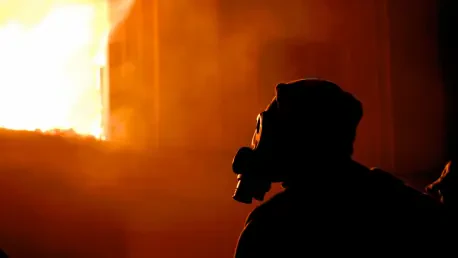I’m thrilled to sit down with Christopher Hailstone, a renowned expert in energy management and grid reliability, whose insights into renewable energy and electricity delivery are invaluable. With a deep understanding of the complexities surrounding energy security, particularly in conflict zones, Christopher offers a unique perspective on the ongoing Russia-Ukraine war and its devastating effects on critical infrastructure. Today, we’ll dive into the recent Russian attacks on northern Ukraine, exploring the impact on local communities, the challenges of restoring power, and the broader implications for Ukraine’s energy resilience as winter looms.
Can you walk us through the recent Russian attack on the Chernihiv region in northern Ukraine and its immediate effects on the area?
Certainly, Emilia. The attack on the Chernihiv region, which occurred just recently, targeted an unspecified energy site, according to local power company reports. This strike caused widespread power outages across stretches of northern Ukraine, affecting both rural and urban areas. Notably, it impacted Slavutych, a town near the decommissioned Chornobyl nuclear power station, located about 28 miles west of the site. The proximity to such a historically sensitive area adds another layer of concern, though no direct damage to the Chornobyl site itself was reported.
What can you tell us about how the town of Slavutych has been affected by this attack?
Slavutych has faced significant challenges due to this strike. A portion of the town lost power, disrupting normal life for many residents. However, essential services like water supply were switched to reserve power, and heating at critical sites remained uninterrupted, which is a small relief. Emergency crews are actively working to restore electricity, but the situation highlights the vulnerability of these communities to such targeted attacks on infrastructure.
How are emergency crews managing the response across the affected regions in northern Ukraine?
Emergency crews are on the ground, working tirelessly to restore power not just in Slavutych but across the Chernihiv region and beyond. They’re facing significant hurdles, including the ongoing threat of further attacks, damaged infrastructure that requires extensive repairs, and the logistical difficulties of operating in a conflict zone. While officials haven’t provided a precise timeline, it’s clear that full restoration could take days or even weeks, depending on the extent of the damage and the security situation.
Can you elaborate on the broader impact of Russian attacks on Ukraine’s energy infrastructure as winter approaches?
Absolutely. The pattern of Russian drone and missile strikes in recent weeks has been particularly focused on Ukraine’s power grid and gas sector, which is devastating as colder months approach. An earlier barrage this month left over a million people without power across the country, showing the scale of disruption. Additionally, attacks on major gas facilities have forced Ukraine to suspend operations at several key sites, creating a dire need for imports. The energy grid is under immense strain, and without significant intervention, the risk of blackouts and heating shortages this winter is very real.
What steps is Ukraine taking to address these energy shortages in the face of such challenges?
Ukraine is actively seeking solutions to mitigate the crisis. President Zelenskiy recently mentioned plans to import gas worth around $2 billion from countries like those in Europe, the United States, and Azerbaijan. This move is aimed at bolstering reserves to get through the winter. Beyond immediate imports, there are discussions at high levels—between the government, parliament, and the president’s office—about enhancing the resilience of the energy system. Long-term plans likely include diversifying energy sources and fortifying infrastructure against attacks, though these will take time and substantial investment.
How have other towns in northern Ukraine been coping with similar power disruptions from these attacks?
Other northern towns, like Izium in the Kharkiv region, have also reported significant power outages following recent strikes. Parts of Izium were left completely in the dark, mirroring the situation in Chernihiv, which itself has been repeatedly targeted. Over the weekend, an attack on an energy site in Chernihiv cut power to 55,000 customers. These repeated hits on energy targets are creating a pattern of disruption that’s incredibly hard for local authorities to manage, especially with resources stretched thin.
What is your forecast for Ukraine’s energy security in the coming months, given the current trajectory of the conflict?
Looking ahead, I think Ukraine’s energy security will remain precarious through the winter unless there’s a significant de-escalation in attacks on infrastructure. The combination of damaged grids, suspended gas operations, and reliance on imports creates a fragile situation. While international support and imports will help, they’re a temporary fix. My forecast is that we’ll see rolling blackouts and localized crises unless protective measures for critical infrastructure improve or diplomatic efforts yield a ceasefire. The resilience of the Ukrainian people and leadership will be tested, but global cooperation could make a big difference in stabilizing the energy sector during this critical time.









